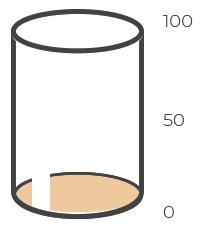Microfiber waffle cloths feature a textured finished that is more abrasive than traditional cloths. This makes them ideal for heavier soils that still require a streak-free finish. At 16×16 and 55 grams, they have the size and weight to effectively clean in a wide range of situations.
Get a quote today on your wholesale microfiber waffle cloth and stock up on these heavy-duty cleaning products.
| IMAGE | DESC. | SKU | PACKING | CASE DIMENSIONS | CASE WEIGHT | UPC | ADD TO QUOTE |
|---|---|---|---|---|---|---|---|
| Microfiber Waffle Cloth - 55 gram - Blue, 16" x 16", 335 GSM, 55 Grams/Piece | M915104B | 15 DOZ/CASE | 24.8” x 16.9” x 8.07” | 24 lbs | 765950-12207-2 | ||
| Microfiber Waffle Cloth - 55 gram - Green, 16" x 16", 335 GSM, 55 Grams/Piece | M915104G | 15 DOZ/CASE | 24.8” x 16.9” x 8.07” | 24 lbs | 765950-12206-5 | ||
| Microfiber Waffle Cloth - 55 gram - White, 16" x 16", 335 GSM, 55 Grams/Piece | M915104W | 15 DOZ/CASE | 24.8” x 16.9” x 8.07” | 24 lbs | 765950-12205-8 |
Since cotton towels are natural woven products, there will be a variation in size and weight when coming off the loom. We use ASTM D5433 to measure our towels against industry-standard tolerance levels.
As cotton is a natural fiber, it will shrink and tighten when first washed. Dimensional Stability is measured against ASTM D5433 and provides a shrinkage value after three laundry cycles (washing & drying).
Since cotton towels are natural woven products, there will be a variation in size and weight when coming off the loom. We use ASTM D5433 to measure our towels against industry-standard tolerance levels.
Skewing is the condition in which the filling yarns in fabric do not lie perpendicular to the warp yarns throughout the width of the towel. Bowing is the curvature of warp or weft, in which yarns make the shape of an arc. Both are measured against ASTMD5433.
Differential shrinkage means that some fibers shrink more than others when you wash them. Practically, this means that shrinking fibers may pull at non-shrinking fibers, causing them to buckle and create puffs of cotton.
The ASTM D5433 measurement is taken to find the difference of width between the dobby/cam border area and center of the towel after three laundering cycles.
The color change scale consists of nine pairs of grey colored chips, from grades 1 to 5 (with four half steps). Specimens of a given hue match against grey chips. They equate differences in lightness with differences in color. One sample is a control, the other is washed. Grade 5 represents no change, and grade 1 depicts a severe change in some standards.
Staining uses a similar set of chips as the color shade standard, except a chip in each pair is white (not grey). Contrasting pairs of chips are given numerical values from class 5 to class 1 (5 being the best). The test is to determine if a colored fabric will stain an adjacent undyed fabric.
Dry Crocking is done using AATCCD Crock Meter that rubs a dry piece of sample against a white fabric for a specific time. Then the white piece of fabric was measured against AATCCC Grayscale for staining to see how much color was migrated.
Wet Crocking is done using AATCCD Crock Meter that rubs a wet piece of sample against a white fabric for a specific time. Then the white piece of fabric was measured against AATCCC Grayscale for staining to see how much color was migrated.
This AATCCB whiteness test is done using the Spectrophotometer to find out the degree of whiteness. The higher the index is, the more optically white the fabric is.
Fabric breaking strength is also can be called tensile strength, which refers to as the maximum tensile force when the specimen is stretched to break. It is one of the main standards to assess the intrinsic quality of textiles. The unit of fabric breaking strength is “Newton (N)” and it is used to evaluate the capability of the fabric to resist to tensile damage.
Average Lint: %
Microfiber Waffle Cloth – 55 gram %
This test is to measure the total amount of lint collected after five laundering cycles. Lint is collected, weighed, and converted in to a percentage of the weight of the actual towel. Often a minuscule measurement, the percentage of lint is critical to commercial plant operations. Also at stake is the perception of quality to consumers. Full lint trap = unhappy customer.

ASTM D4772 tests the absorbency rate of surface water into a towel or fabric. The faster the time, the higher the rate (or percentage). Buyer beware! Many manufacturers use fabric softener to make their towels seem softer. This reduces the absorbency rate of a towel. Water beads on the surface as the softener clogs the fabric with an impermeable chemical.